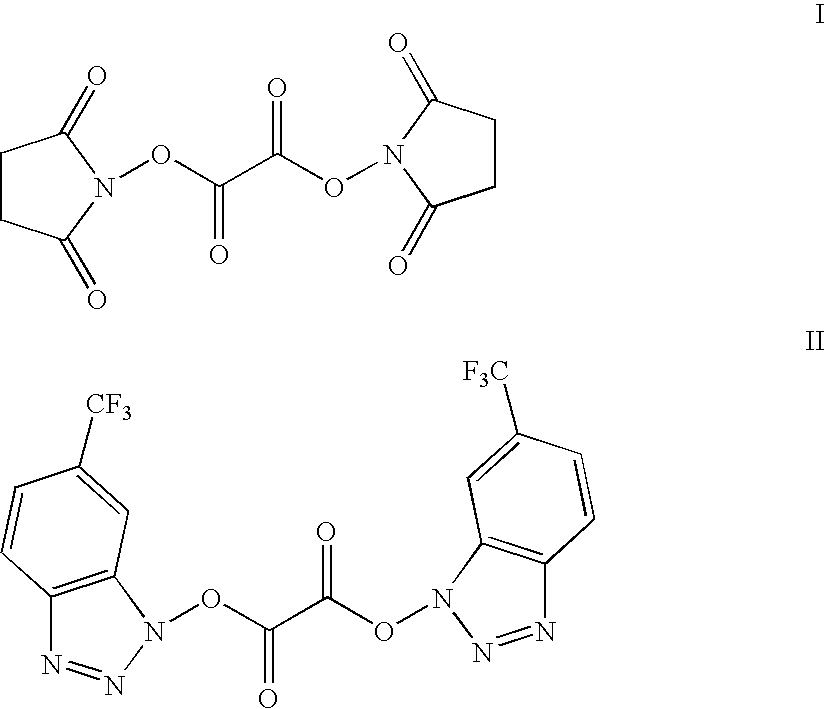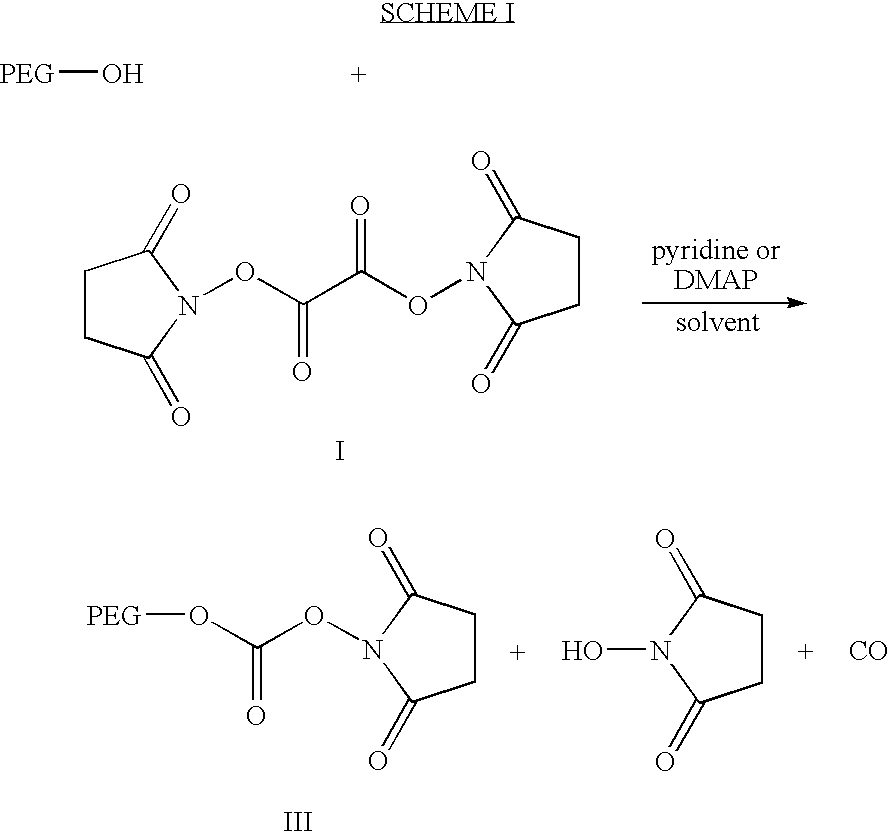Activated polyethylene glycol esters
- Summary
- Abstract
- Description
- Claims
- Application Information
AI Technical Summary
Benefits of technology
Problems solved by technology
Method used
Image
Examples
example 1
[0079]
[0080]N,N′-disuccinimidyl oxalate (5.7 g, 20 mmoles) ) and monomethyl polyethylene glycol (mPEG, M.W. 6,000; 6 g, 1 mmol) are stirred in dichloromethane (50 ml) at room temperature in the presence of pyridine (2 ml) overnight. The solid is filtered and the filtrate is treated with ether (600 ml). The white precipitates are filtered and washed thoroughly with ether. The precipitate is redissolved in dichloromethane (40 ml) and treated with ether (500 ml). The process is repeated once to give the title compound as a white solid material (5.85 g).
example 2
[0081]
[0082]A human Growth Hormone (hGH) solution is prepared at a concentration of 2 mg / ml in 0.2 M borate buffer of pH 8.5. The title compound of Example 1 is added in small portion to the protein solution in a molar ratio of approximately 5:1 mPEG active ester per protein. The reaction mixture is stirred for about 2 to 3 hours. The mPEG-hGH conjugate is purified by ultrafiltration and concentrated in a Amicon system with a PM 10 membrane (cut off 10,000) to remove N-hydroxysuccinimide produced by the reaction. The conjugate is further purified from the excess of unreacted mPEG by gel filtration chromatography on a Pharmacia Superose 12 column. The filtrate is lyophilized to give a white solid product.
example 3
1-hydroxy-6-(trifluoromethyl)benzotriazole
[0083]
[0084]The title compound is prepared according to the procedure described by K. Takeda [J. Org. Chem., 50, 273, (1985)]. A mixture of 4-chloro-3-nitro-α,α,α-trifluorotoluene (50.0 g, 0.22 moles) and hydrazine hydrate (33.0, 0.33 moles) in absolute ethanol (75 ml) is refluxed for 24 h. After removal of the solvent under reduced pressure, the residue is dissolved in 10% aqueous sodium carbonate solution. The solution is washed with ether to remove the starting material and acidified with concentrated HCl to precipitate the product, which is washed with water and dried to obtain 40.0 g of the title compound. This product is recrystallized from ether.
PUM
| Property | Measurement | Unit |
|---|---|---|
| Substance count | aaaaa | aaaaa |
| Substance count | aaaaa | aaaaa |
| Substance count | aaaaa | aaaaa |
Abstract
Description
Claims
Application Information
 Login to View More
Login to View More - R&D
- Intellectual Property
- Life Sciences
- Materials
- Tech Scout
- Unparalleled Data Quality
- Higher Quality Content
- 60% Fewer Hallucinations
Browse by: Latest US Patents, China's latest patents, Technical Efficacy Thesaurus, Application Domain, Technology Topic, Popular Technical Reports.
© 2025 PatSnap. All rights reserved.Legal|Privacy policy|Modern Slavery Act Transparency Statement|Sitemap|About US| Contact US: help@patsnap.com



